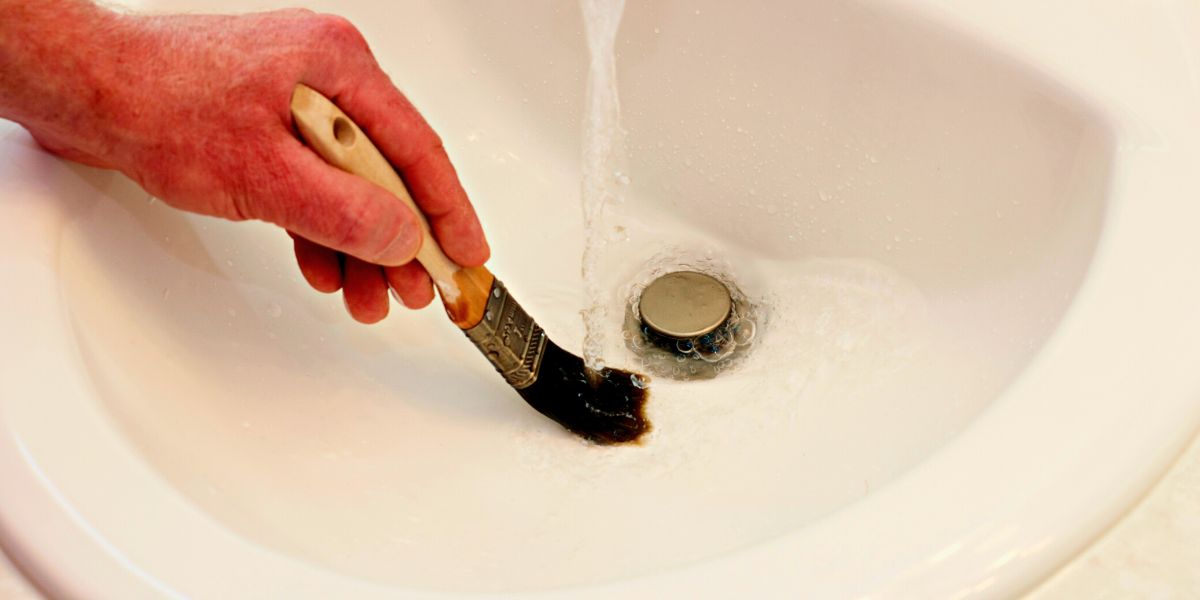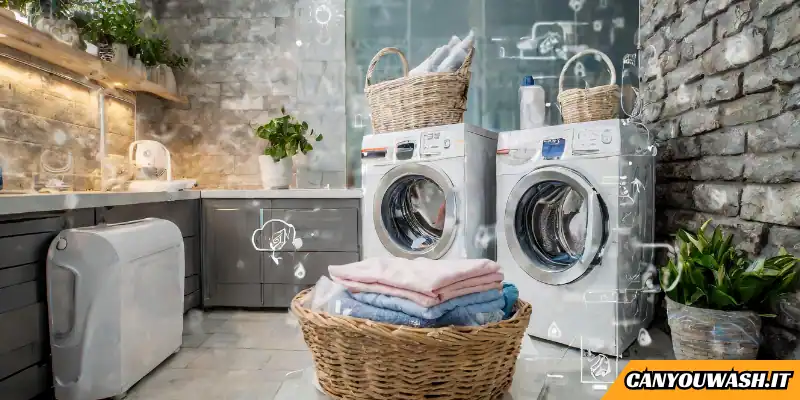Yes, you can wash paint brushes in the sink, but the method depends on the type of paint you used.
| Type of Paint | Cleaning Method |
|---|---|
| Acrylic and Watercolor | 1. Rinse the brushes under warm water, working out the paint with your fingers. 2. Use a bit of mild soap to thoroughly clean the bristles. 3. Rinse the soap out completely and reshape the bristles. 4. Lay the brushes flat to dry. |
| Oil-based | 1. Use a paint thinner to remove the paint from the brushes. 2. Wash the brushes with soap and warm water. 3. Rinse the brushes thoroughly. 4. Reshape the bristles and lay the brushes flat to dry. Note: Do not clean oil-based paint brushes in the sink without a solvent, as the paint can cause plumbing issues. |
Dos and don’ts of washing paint brushes in the sink
Dos
- Do clean your paint brushes as soon as you are finished using them. Dried paint can be difficult to remove from the bristles.
- Do use warm water and a mild soap to clean brushes used with water-based paints like acrylics and watercolors.
- Do use a paint thinner or solvent to clean brushes used with oil-based paints.
- Do work the paint out of the bristles with your fingers, gently massaging the bristles to remove as much paint as possible.
- Do rinse the brushes thoroughly under warm water to remove all paint and soap residue.
- Do reshape the bristles after cleaning them, so they retain their original shape.
- Do lay the brushes flat to dry or hang them with the bristles facing down to prevent water from seeping into the handle and causing damage.
- Do dispose of paint and solvent residue properly, following your local waste disposal guidelines.
Don’ts
- Don’t use hot water to clean paint brushes, as this can damage the bristles.
- Don’t soak your paint brushes in water, as this can cause the bristles to become misshapen or damaged.
- Don’t clean your paint brushes in the sink without using a solvent or paint thinner if you have used oil-based paint, as this can cause plumbing issues.
- Don’t use strong detergents or abrasive cleaners on your paint brushes, as this can damage the bristles.
- Don’t use a hair dryer or other heat source to dry your paint brushes, as this can melt or warp the bristles.
5-step guide to washing paint brushes in the sink
Step 1
Remove Excess Paint
Using a piece of scrap paper or a clean cloth, wipe the excess paint off your brush as much as possible.
Step 2
Rinse the Brush
Hold the brush under warm running water to rinse out the remaining paint. Work the brush gently with your fingers to release the paint.
Step 3
Clean the Brush with Soap
Add a small amount of mild soap to your hand or a cleaning container. Use your fingers to work the soap into the bristles of the brush, ensuring all paint is removed.
Step 4
Rinse the Brush Thoroughly
Rinse the brush under warm running water until no soap remains. Gently reshape the bristles with your fingers.
Step 5
Dry the Brush
Lay the brush flat on a clean surface or hang it up with the bristles pointing down to dry. Avoid using a hair dryer or any heat source to dry the brush as this can damage the bristles. Allow the brush to dry completely before using it again.
FAQs
Can I clean all types of paint brushes in the sink?
It depends on the type of paint you used. Brushes used with water-based paints like acrylics and watercolors can be cleaned in the sink with warm water and a mild soap. Brushes used with oil-based paints should be cleaned with a solvent or paint thinner first before being washed with soap and warm water.
Can I use hot water to clean my paint brushes?
No, it is not recommended to use hot water as it can damage the bristles of your paint brushes.
Can I soak my paint brushes in water to clean them?
No, soaking your paint brushes in water is not recommended as it can damage the bristles and the handle of the brush.
Can I use a hair dryer or other heat source to dry my paint brushes?
No, using a hair dryer or other heat source can damage the bristles of your paint brushes. It is best to lay them flat to dry or hang them with the bristles facing down to prevent water from seeping into the handle and causing damage.
How do I dispose of paint and solvent residue?
You should follow your local waste disposal guidelines for proper disposal of paint and solvent residue. In some areas, you may need to take them to a hazardous waste disposal facility.
Can I reuse paint thinner or solvent for cleaning brushes?
Yes, you can reuse paint thinner or solvent for cleaning brushes, but you should allow the residue to settle and then pour off the clear solvent for reuse. The remaining residue should be properly disposed of according to your local waste disposal guidelines.
Final thoughts 💭
In summary, paint brushes can be cleaned in the sink, but the method depends on the type of paint used. Water-based paint brushes can be cleaned with warm water and mild soap, while oil-based paint brushes require a solvent or paint thinner before washing with soap and water.
Avoid using hot water, soaking the brushes, or drying them with heat. Disposing of paint and solvent residue properly is also important. Paint brushes should be cleaned immediately after use to prevent paint from drying on the bristles.





Leave a Reply